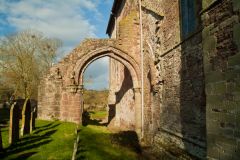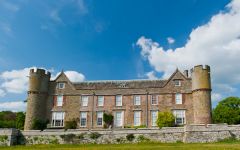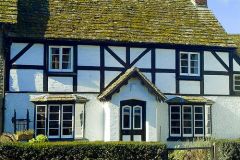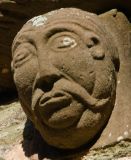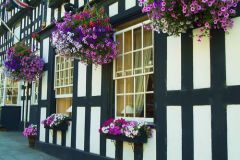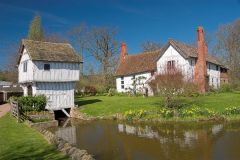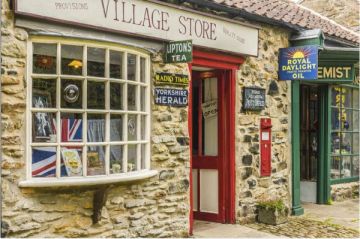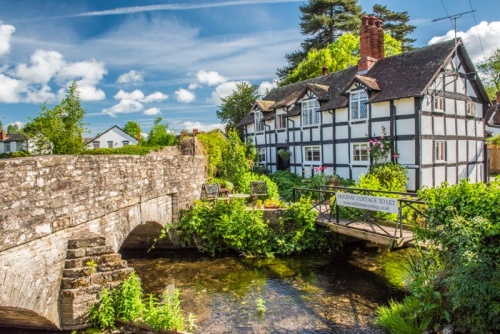
Heritage and Travel
Herefordshire is a largely rural county of wide plains lying between low hills, carved by slow-moving rivers. Along the banks of these rivers sprout villages boasting some of the most attractive half-timbered buildings in all of England. Grange Court, in Leominster, is one of the finest 'black-and-white' buildings, but to single it out would be a disservice to hundreds of other beautiful examples of this most traditional English style.
In the fields surrounding the villages of Herefordshire roam white-faced Hereford cattle, once unique to this region but now to be found worldwide.
The attractive cathedral city of Hereford itself provides plenty of material for a traveller's camera. The roots of the history of Hereford are Saxon, and indeed fragments of the original Saxon city walls can still be seen.
The Old House in Hereford is a delightful Jacobean half-timbered house built in 1621, and the St John Medieval Museum on Widemarsh Street is a 13th-century chapel and museum highlighting the history of the chivalric knightly Order of St John.
Though these attractions are interesting, it is the Cathedral that draws most visitors to Hereford. The Cathedral was begun in the 11th century, and it contains superb Gothic architectural detail.
For a bit of refreshment served with history, visit the Cider Museum and King Offa Distillery on Whitecross Road, which traces the history of traditional cider in Herefordshire in a fascinating display that features a huge 17th-century beam press and a recreation of a Farm Cider House.
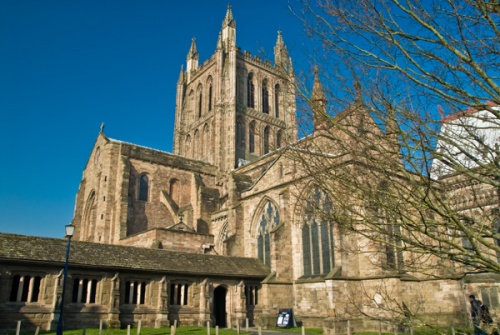
For a less grandiose but nevertheless moving experience of Norman medieval church architecture, visit Kilpeck, whose small parish church offers superb examples of medieval carving. Of particular note is the massive font and the intricate south doorway, entered through a worn oaken door bound by iron strapwork.
At Ledbury, on the verge of the Malvern Hills, the 17th-century market house is supported on its original oaken posts, but you won't want to stop long before moving on to Eastnor Castle, the amazing mock-Gothic creation of the 1st Earl Somers. All bristling turrets and battlements, Eastnor is a medieval fantasy begun in the early 19th century.
The castle is set in a superb landscaped garden, especially notable for its variety of trees, while the interior is a sumptuous feast for the eyes, with fine art, tapestries, and furniture decorating rooms by Gothic Revival master designer A.W. Pugin.
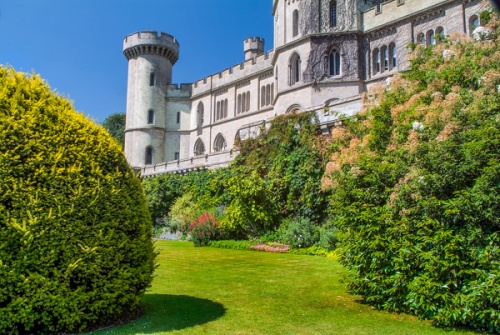
If you yearn to visit a "real" castle, you can't do much better than Goodrich, a wonderful fortress of red sandstone rising high above the River Wye. Goodrich is a romantic ruin built in the 13th century to a square design, with large rounded towers at the corners.
For a less martial look at medieval English architecture, visit some of Herefordshire's fine manor houses, like Brockhampton, surrounded by its 14th-century moat, or Hellens, lived in by the descendants of its original builder for over 700 years.
For gardens, try Hergest Croft, 50 acres of woodland and formal gardens containing the national collections of birches, maples, and zelkovas. Or Hampton Court Gardens, outside Leominster, where a fanciful mix of walled and water gardens surround a fortified manor house.
